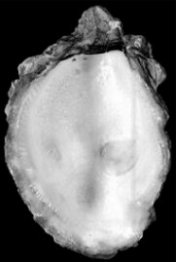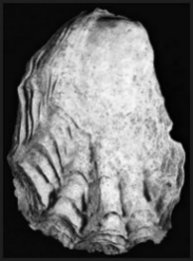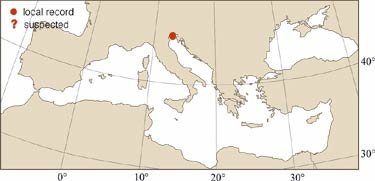

|
Relevant Synonyms
Misidentification
|
|
| photo: L. Mizzan |
|
SHORT
DESCRIPTION
color :
blue black to grey-white and blue-black or purple margins. Internally chalky white with purple areas and black-purple or brown margins.
common size :
in Australia length to 100 mm (cultivated specimens up to 255 mm). |
DISTINGUISHING CHARACTERISTICS
BIOLOGY / ECOLOGY
habitat :
attached to rocks in subtidal areas. |
|
1st
Mediterranean record
|

|
|
DISTRIBUTION
|
ESTABLISHMENT SUCCESS
speculated reasons for success :
|
|
|
MODE OF
INTRODUCTION |
IMPORTANCE TO
HUMANS |
|
KEY
REFERENCES
|
|
|
 Saccostrea glomerata (Gould, 1850)
Saccostrea glomerata (Gould, 1850)